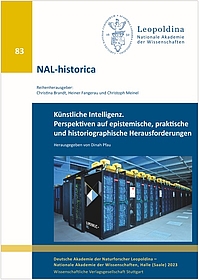
Diagrams are not popular by chance. Artificial Intelligence (AI) research has made advances that have an archaeological kinship with philosophical questions and concepts. The logical top-down modelling of AIs in the early stages has been subjected to a fundamental philosophical critique since the 1970s, which in response led to their deeper embedding in the human lifeworld with the help of empirical-inductive data sets. What we observe today, on the other hand, promises a restructuring of the field, in which mediation between concept and intuition, such as Kantʼs schematism or Peirceʼs diagrammatic reasoning, is likely to play an important role. However, one essential aspect still appears to be overlooked: the significance of professional design for the diagrammatics of human learning and teaching. Apart from the fact that every diagram is already a design, we might also gain from interpreting the digital design of the present as the diagrammatics of our lifeworld, which not only instruct solely human actions. The transition from smartness to intelligence would then be an issue of comprehensive communication design (CD). To instruct artificial intelligences in this would mean letting it learn human learning. The hypothesis is thus: No artificial intelligence deserves its name without developing a sophisticated understanding of communication design, in short: no AI without CD.